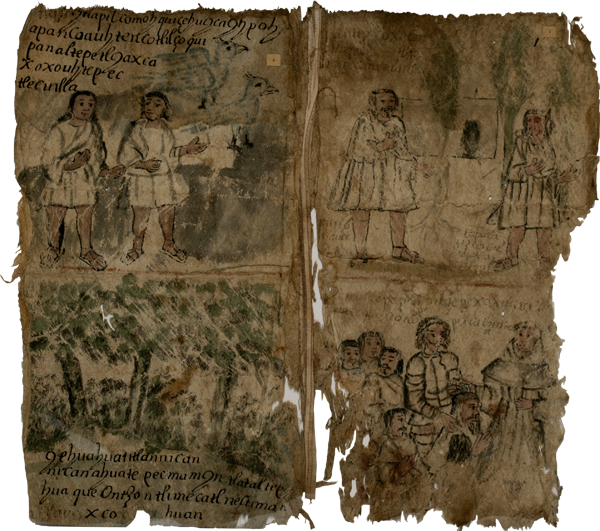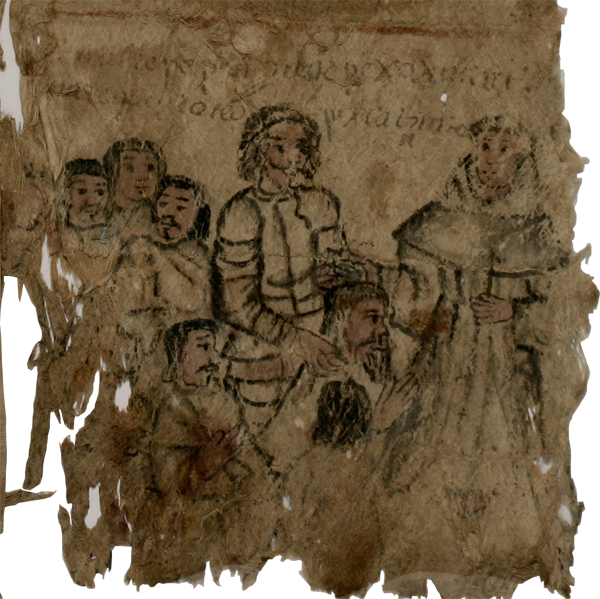1, bottom: baptism
This is a detail, in the bottom scene on the double register with the number 1, showing six indigenous people (three men standing at the back, two men kneeling, and possibly one woman seated with her back to us. One of the men is in the act of receiving baptism from a Spanish friar (standing) while a Spanish conqueror in armor assists. The man receiving baptism has long hair and a long, substantial beard, much more than the norm for indigenous men in these manuscripts. The indigenous men are already wearing loose white cotton clothing, perhaps the type of clothing they were encouraged to wear in the Spanish colonial period. The friar performing the baptism with his right hand, wears robes and carries a cross in his left hand. A text across the top explains the scene, but it is largely illegible. We do see “tepexoxu...,” probably the town name (which would have been Tepexoxouhcan, originally). We also see “toteopixcatzin,” a reference to the friar.
Popular memory, as portrayed in these manuscripts, gives an iconic place to the act of baptism, which would have been one of the earliest experiences with Spanish colonialism, probably prior to building a church on the site of a pre-Hispanic temple. It is possible, but unlikely, that a man in armor would have assisted the friar, but the sense the man in armor conveys is that this would have been an event close on the heels of the Spanish invasion and consolidation of power in the capital. [SW]

